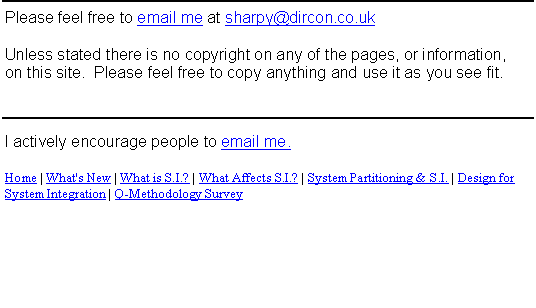
|
System Integration |
|
Dedicated to the dissemination of System Integration information |

|
My definition of legacy equipment is very broad, it not only includes the equipment that the new system has to work with and connect to, i.e. the traditional definition of legacy equipment, but also the support structure.
If a company has invested heavily in expensive generic test equipment that will not work with a new system they would need to consider the cost of any new test equipment before purchasing a new system; if the customer considers this point so will any designers.
This broadening of the definition of legacy equipment can also take into account the skills of the customers’ workforce. If, say, a test solutions company wants to produce a new test environment system that uses, say, C++ for customer plug-ins (i.e. the customer customizes the test equipment to suit their own needs using C++) the system will not be sold to a company whose expertise lies in Java.
This definition can be expanded almost indefinitely, e.g. you won’t sell a £10 million pound system to a small start up company, some defense companies will not (they are not allowed to) buy systems from manufacturers in certain other countries.
The point is when considering ‘legacy equipment’ you need to have a broad view, a wide view; you need to think how your equipment will fit into the ‘legacy system’. |
|
Definition of Legacy Equipment |


|
|